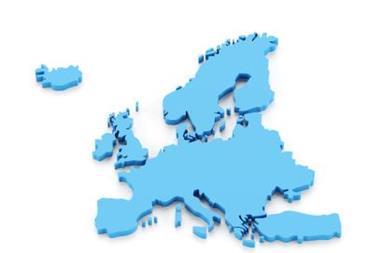Two liability experts give their views on whether insurance can protect companies against the possibly unquantifiable liabilities arising from new environmental legislation
On 13 February 2008, the CEA, the representative organisation for the European insurance and reinsurance industry, presented findings from a second study considering cornerstones for possible insurance solutions to the Environmental Liability Directive’s (ELD) requirements. The study was prepared by the CEA Environmental Experts Working Group. Its purpose is to provide knowledge and support to help individual insurers develop products and consider the issues regarding financial responsibilities within the ELD.
StrategicRISK caught up with two key members of the working group to discuss the issues from a buyer’s and an insurer’s perspective. We spoke with Pierre Sonigo, general secretary of FERMA, and Phil Bell, group casualty director at Royal & Sun Alliance and chairman of the general liability committee of the CEA.
How long have you both been involved with the CEA working group?
Pierre Sonigo: I have represented FERMA on the group since it was launched about three years ago. It has proved to be interesting to have a view of the insurance dialogue, discussing a number of the issues to do with the ELD with insurance company experts.
Phil Bell: It was a deliberate policy to get a buyer to work with us, because it’s very easy for insurers to get their own ideas about what they want to do, but it’s important to have the buyer’s perspective. So Pierre and I have worked together throughout that time as part of the working group.
How do you hope European insurers will respond to the liabilities under the ELD?
Pierre Sonigo: Last year, after the CEA meeting, I mentioned that I considered the insurers to be risk averse and not willing to take any risks regarding ELD liabilities. Some progress has been made, but there are still a very limited number of players who are willing to take the risks. The coverages which are provided are not satisfactory concerning the risks to do with the compensation requirement of the directive. There are many issues that need to be clarified. So, while we are working with the insurers, we are not in a position where we can say we have satisfactory products available for everybody at a reasonable price.
Phil would you say insurers are risk averse?
Phil Bell: I don’t agree that insurers are risk averse in this area. I think one of the challenges that insurers have is in relation to liabilities of which they have no experience, and where the data that would help them doesn’t exist. And that is why there is a lot of original and creative thinking having to be done. I think one of the main problems has been that environmental insurance has got a bad name because of the US, and therefore people tend to be cautious. Hopefully, our working group will be able to address some of the issues about how to undertake a risk assessment, the scope of cover and dealing with claims. The claims area is important, because the whole objective of the directive is the prevention of remediation damage. And that’s an important area for the client as well as for the insurers and competent authorities.
Are European businesses still facing a lot of uncertainty to do with the ELD?
Pierre Sonigo: I think there are a few uncertainties that we need to clarify. The first one is about whether the directive is applicable with regards to the administrative role and also the insurance contract. That’s going to be an important issue and needs to be addressed. There is also some uncertainty about the basic trigger; we need to work on that. There is uncertainty about time scope, how is your policy going to respond to a loss that could last for 25 years? There are some issues to do with the claims aspect. Who is going to control the claim? Is it the insurer or administration? There are so many uncertainties that haven’t been clarified yet.
Phil Bell: I think there is some added uncertainty, as 16 countries have yet to transpose the directive. And given the fact that they can exceed what the directive lays down, this leaves a lot of countries where the actual scope of the liabilities is not yet defined. That creates uncertainty for buyers of insurance as well as for providers. It’s difficult for buyers of a policy if they don’t know what the liability regime is.
What impact do you think the different transpositions into national laws will make?
Pierre Sonigo: I think it will have a very big impact depending on the nature of the country a large European conglomerate operates in. There are countries where the risks are very difficult to insure against. Hungary is one example. Because of the way they are transposing the directive there are all kinds of new constraints which will be difficult to cover through an insurance policy. It’s like a puzzle where you have to adapt to each country.
Phil Bell: Absolutely right. It’s interesting that where the liability regime has been transposed closely following the directive, the most positive developments in the insurance markets have followed so far. Trying to put together a pan-European policy covering all operations in different countries if you have such a wide diversity of liability laws is very difficult.
Since April last year, do you think any of the uncertainties arising from the directive have been clarified?
Pierre Sonigo: Yes, in the sense that since April last year more countries have transposed the directive, so you at least know how it has been transposed in those countries. Sixteen have not yet done it, so this is creating a lot of uncertainty. Otherwise, I’ve not seen one policy document that clarifies all these uncertainties that we’ve mentioned.
Phil Bell: I’d agree with that. I think uncertainties remain. Basically, what has happened is that where there are environmental liability pools, the pools have decided what they can do. There will be an element of learning as we go along I’m sure, because we are dealing with new liabilities, and even the competent authorities will need to learn as they go along. I think the important thing is that the working group is talking about it and exploring areas where we can develop. But there are still only a small number of insurers who actually offer cover.
Pierre Sonigo: Obviously industrial companies are not very much in favour of pools. Because what we want to see is a competitive market. I don’t think the insurance companies are in favour of pools either. They exist in some markets in France and in Spain; maybe this provides adequate coverage but there’s no competition. And we want a market that is competitive.
Phil Bell: I agree about the desire for a competitive market. I think pools exist as a means of providing some protection against risks that commercial insurers are reluctant or not willing to provide. It’s a means of achieving some coverage, but you are right there isn’t really competition. And what we really want to see is healthy competition that generates innovation.
What challenges do insurers and risk managers face in establishing historic environmental liabilities?
Pierre Sonigo: It used to be a very easy thing to ensure environmental liabilities, because it was always included in general liability policies. We had almost no exclusion for environmental liability or pollution and things like that. Suddenly, when the risk appeared to be a major risk it was excluded. And then there were issues about being able to provide adequate insurance. Before the directive, insurance products existed that would cover almost all types of pollution, whether it was sudden and accidental or gradual. We could get coverage for clean up costs. Almost anything could be arranged. It’s just that the directive is providing new challenges now.
Phil Bell: But it’s prospective only: the directive does not apply to historic pollution, so it’s only events that take place after the date of adoption – 30 April 2007.
Do you feel that the people who need to buy environmental liability protection have enough information about the risk?
Pierre Sonigo: We have an issue as buyers. A lot of insurance companies are saying they have come up with a nice product, but that no one wants to buy it at the moment. I don’t think there is a really good analysis, from the buyer’s point of view, of what the risks are and why there may be a need for a specific policy. Because, as we said, 16 countries have yet to transpose the directive, there has not been a huge request for this type of cover so far. I think there is an indication to be made on the buyer’s side on why an actual policy may not respond to the ELD risks and why there may be a need to buy new products.
Are the buyers having difficulty providing the information needed to underwrite the risk?
Pierre Sonigo: Obviously the underwriters always want more and more detailed information. And not every company has a detailed map of all their environmental risks and what kind of potential pollution they could have.
Phil Bell: It is a new area though, and I would imagine that in time businesses will get a better understanding of what they need and what underwriters will need.
Pierre Sonigo: The problem is that they need insurance before they can provide the information that the underwriter would like to have to provide the insurance. So it’s an odd situation. My feeling is that we should be able to get insurance and then give out the information to adapt or adjust the premiums, because we are not going to expect a large amount of claims in this area.
Phil Bell: You’re probably right. I guess that risk management is going to be a crucial area here. Organisations, like your members, are all about risk management. The directive of course applies to a wide range of companies and perhaps some of them don’t place enough emphasis and importance on risk management. They may be the ones who might find it more difficult. I think the main thing for me is that the White Paper we launch today will stimulate discussion between competent authorities, buyers, insurers, and national insurance associations, to try and take this through.
Pierre Sonigo: There are at least two different areas of particular interest in this report. The first is how has the directive been transposed in member states. The second one is that there is a good risk assessment portion, which will provide tools to help in evaluating probability and severity of risk. There is also an excellent analysis of how existing policies can work and what gaps and duplicated coverage exist. And finally on the claims handling there is an excellent section. I firmly recommend this report to our members.




















No comments yet